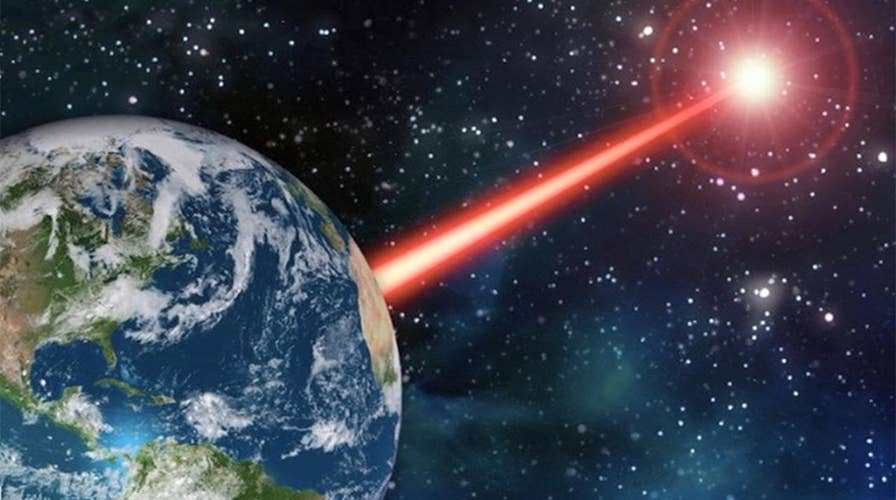New study suggests lasers could be used to signal aliens
Scientists from MIT published a paper describing how a powerful laser coupled with a massive telescope could create a detectable beacon for interstellar travelers.
Calling all aliens! The search for extraterrestrial life is alive and well, and this week, two scientists from MIT breathed new life into the effort with an out-of-this-world idea for contacting non-earthlings.
The plan is simple: create a laser that has the ability to let distant planets, some tens of thousands of light years away, know that we exist. The two researchers have published a new paper in The Astrophysical Journal, theorizing that we could build the laser, then combine it with a massive telescope, to make a detectable beacon for interstellar travelers.
DRONE FLEET COULD HELP FIND LOST HIKERS, MIT RESEARCHERS SAY
The good news is that the technology needed is less science fiction and more science fact. The laser would need to be between 1 to 2 megawatts, a huge amount of energy and a potential hurdle to completion. But this technology isn't new to the military. The Air Force developed a megawatt-level laser for a now-defunct missile defense project, but the design team could easily be re-assembled and re-tasked to the beacon project. "This would be a challenging project but not an impossible one," according to James Clark, an MIT grad student and the paper's lead author. "The kinds of lasers and telescopes that are being built today can produce a detectable signal, so that an astronomer could take one look at our star and immediately see something unusual about its spectrum."
As for the telescope - it would need to be between 30 and 45 meters in diameter - and there are several already in operation or in the planning phase that fit the bill. In fact, three different telescopes in that size range are under construction right now, and scheduled to come online in the early to mid-2020s - including the Thirty Meter Telescope (TMT) being built on the Hawaiian peak Mauna Kea.
ARE YOU READY FOR A CHIP IMPLANT?
It could potentially be aimed a couple of close neighbors: the newly-discovered Trappist 1 Star system, which is about 40 million light years away, is a good bet to contain some sort of life. Or if we wanted to look closer, Proxima Centauri, our nearest neighbor, is just 4 light years away. At those distances, the quick flash would be seen just a few years after it was sent, potentially opening up lines of communication should there be an intelligent civilization to receive it. In theory, the beacon would beam infrared radiation, which is long-wavelength light that's invisible to the human eye. The resulting signal could be powerful and distinct enough that it would not be drowned out by the sun's heat signature.
Of course, some scientists do question if we should be in the business of alerting intelligent aliens to our presence - and invite a possible invasion if the interstellar travelers we contact turn out to be more "Independence Day" than "ET"!

